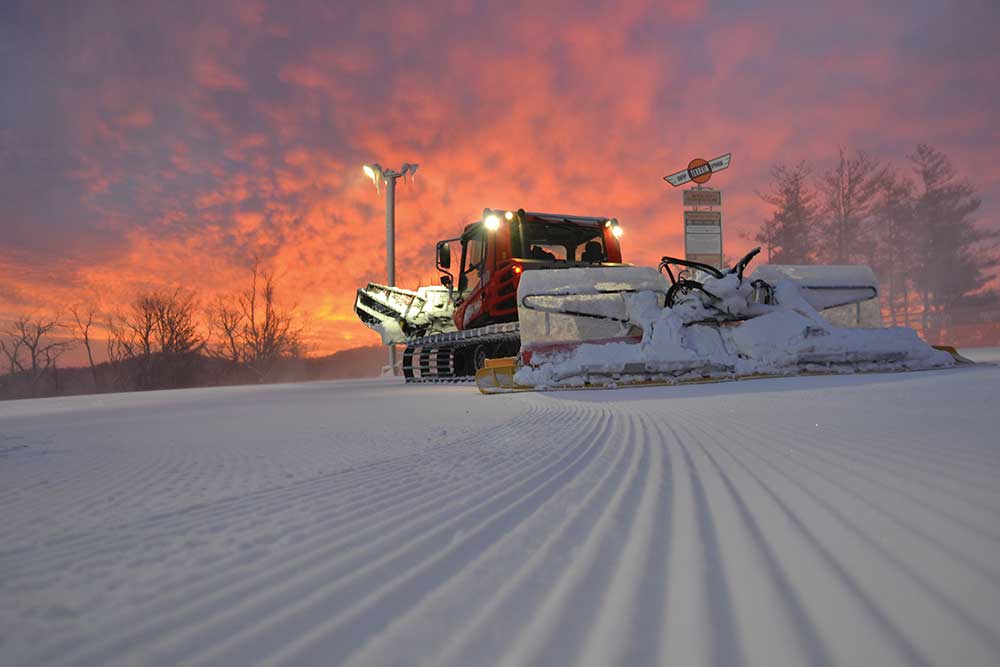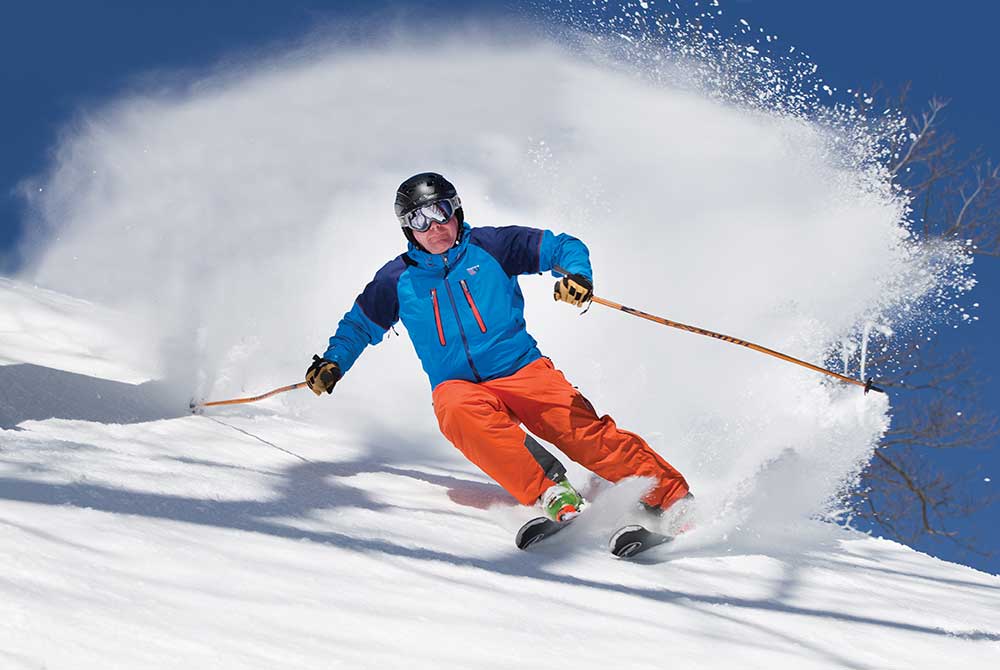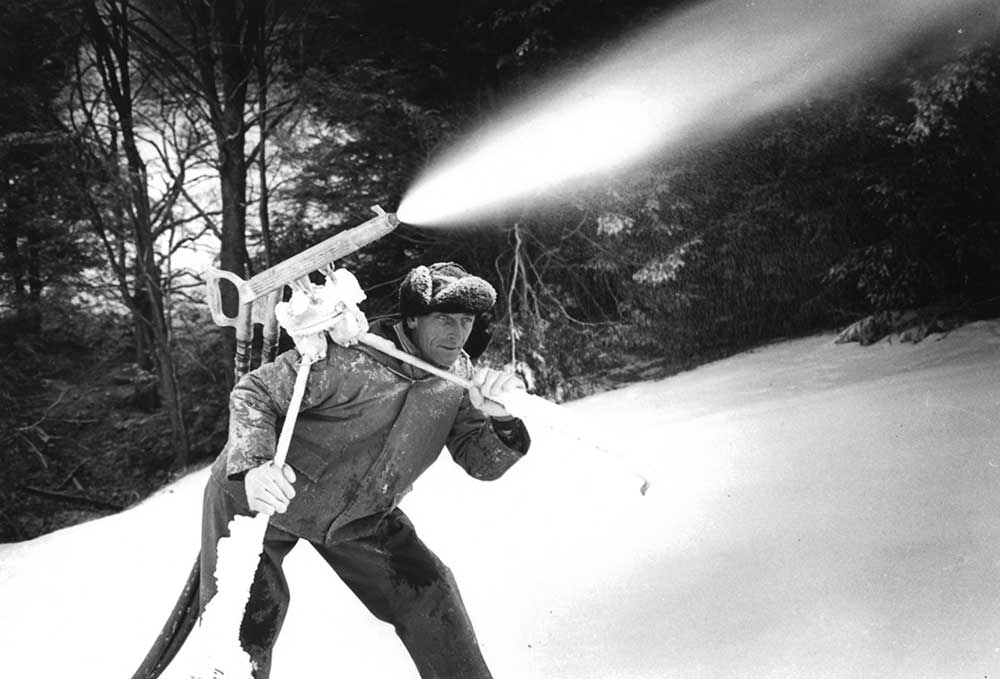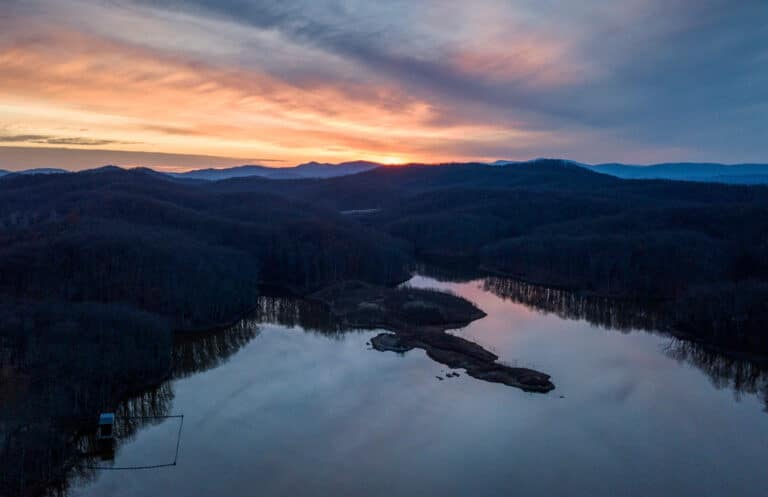Aiming at the future. No wonder they called them snow guns. Photo: Beech Mountain Historical Society
Who Would Write a Book About Snow in the South?
I would. Here’s Why.
The South is the Rodney Dangerfield of ski regions—it never seems to get any respect. At least that’s the way I saw it back in the mid-1970s, when Southern slopes were the “Banana Belt of skiing,” no doubt covered in grits.
At first it was annoying. Then it made me angry. I was determined to set the record straight. The result: Southern Snow: The Winter Guide to Dixie, a 1986 book called “a cult classic” by late ski film pioneer Warren Miller.
An amazing 33 years later, the “classic” is back, in a new second edition from the University of North Carolina Press, and just in time for the 60th anniversary of skiing at Virginia’s Homestead—considered the first designed to operate exclusively on machine made snow. In 1959, that true “leap of faith” set the stage for the rest of the South’s slopes and the eventual success of snowmaking itself.
The new book has a slightly different title, Southern Snow: The New Guide to Winter Sports from Maryland to the Southern Appalachians, but the mission remains the same—celebrate the South’s winter sports lifestyle.
Besides a career-capping chance to reprise my first book, the new Southern Snow provides an opportunity to announce the increasingly national quality of skiing in the South, an achievement that many southerners are remarkably unaware of. Along the way, I tell hundreds of inspiring and even insane tales.

The Search for Southern Snow
I didn’t start out excited about Southern snow. I loved to hike as a kid, then my Boy Scout troop attended a January 1963 suffer-fest in the northern Virginia Blue Ridge called “Operation Icicle.” Sounds fun, eh? The boys slept in smelly, army surplus, duck down mummy bags under canvas “shelter halves.” Our leaders bunked in “officer’s quarters,” wall tents with stoves. We were reliving WW II; the Scouts were the grunts, and our aging Dads had finally grown Pattonesque.
Luckily, at some point, I remember emerging onto a snowy summit, stunned by wind-whipped hoarfrosted trees, looking out over my first-ever sea of clouds. I decided this was a nightmare I could love.
The search went on, including the time my Dad dropped off a high school friend and me at the Old Rag trailhead in Shenandoah National Park. We stood there in 20 inches of snow watching the tail lights of a Buick Wildcat disappear when my friend said, “I left my coat in the trunk.” We were long on hair and short on experience.
After an agonizing post-hole to Old Rag Shelter (where were our skis, or snowshoes?), we finally started a fire and inhaled some barely tepid food (and other things). We were lucky to have the shelter back when you could camp in it (you no longer can).
We heard people approaching and suddenly a group of full-blown DC yuppies skied up—no doubt, diplomats, doctors, lawyers—with every down-stuffed garment and big-bucks gizmo you could imagine. They enjoyed wine and gourmet food while we stood out in front of the shelter in the dark trying to sustain a miserable fire.
Then I remember smelling something funny (again). Before what was happening sunk into my hypothermic purple haze, someone in the shelter told my friend, “Hey, man, you better tell your buddy his foot’s on fire.” Yep, there it was, a blue flame flickered on my feeble boot. I stumbled out into the dark snowscape to, well, put out my foot.
That’s when down gear and gas stoves replaced “record albums” on the wish list, and finding more and more snow in the South became job one, starting with a 1977 Subaru, the first of now nine “Subes” over four decades. My friends and I survived, became serious winter hikers and Nordic skiers, found snow all over the South, and made annual trips to climb Mount Washington in New Hampshire.
After moving to Boone in the late 70s to start Grandfather Mountain’s trail management program, I thought I’d found the best part of the Southern Apps. Actually living in the mountains, it registered how much like New England these highest southern summits really were. When I finally stumbled onto the area’s downhill ski resorts, my trail-only telemarks found a new home on the slopes.
Dedicated to living the ski life in a region known more for sun than snow, I researched the science behind the “why” and “how” of the snowy mountain climate and was amazed at how much snow fell on the highest peaks. A group of Boone area baby boomer friends formed High South Nordic Guides and launched a Nordic ski center on Roan Mountain. The southernmost cross-country ski resort in the East was as successful as it was unlikely, an official Tennessee state park concession, no less.
Winter enthusiasts want to spread the word, but whenever I tried to aim my early writing at southern skiing, the question from editors was always, “you mean you can ski down there?” And that was from regional newspapers. National ski publications just laughed.
That tide of ridicule has finally receded. Southern ski coverage by myself and others eventually found its way into the region’s biggest newspapers and magazines, often annually. Even the national ski media began noticing the infectious enthusiasm of people skiing on grits. But the old ways died hard. One article of mine for SKI magazine included an oddly telling typo—“Beech” Mountain had somehow become “Beach Mountain.” Not quite!

A 1986 Manifesto
The original Southern Snow emerged as a 358-page chip on my shoulder, and the new book has grown to 446 pages—but not to counter an ongoing negative image for Southern skiing. We’ve simply come so far, I had to rewrite the book to catch up!
The story of how skiing first slid south on natural snow truly inspired me. Back in the day, I’m glad I searched out some of the ski pioneers from the ‘30s and ‘40s. The Homestead in western Virginia had opened just 27 years before the first book, and I met, interviewed, and photographed Sepp Kober, the Austrian ski instructor responsible for the resort’s slopes and so much that came after.
I’ve lived through the almost four decades since, seen the trends evolve, skied the slopes and trails, including many all over the United States and Europe, even South America. Snowboarding wasn’t mentioned in the first book. It hadn’t been invented. Neither were websites!
The new book still has separate chapters of insider advice on how to be a downhill skier, snowboarder, Nordic skier, winter hiker, and mountaineer in the South. The mountain climate chapter, called the “definitive study of Southern Appalachian weather” back in 1986 by the National Oceanic and Atmospheric Administration, updates and expands those insights, including new research on the impact of climate change.
Besides guide entries to all of the region’s ski and snowboard resorts, cross-country ski centers, and tubing facilities, half the book is a six-state trail guide that covers the highest snowiest trails for winter hiking and Nordic skiing from Maryland south.
Here’s to Southern Snow
Nothing succeeds like success. Almost 40 years after the first Southern Snow, the region’s best ski areas are as sophisticated as resorts anywhere in the country. Cutting-edge snowmaking continues refining the quality and quantity of snow on the slopes. State-of-the-art grooming puts the icing on the cake (or removes the “icy,” actually). And high-speed lifts make it easier than ever to get the most out of a day on the hill.
The real surprise is how nationally significant Southern slopes have become. Ski Industries America says the five southeastern states have as many active skiers as the nine New England states. Washington, D.C., the city whose residents flock south to ski, whose ski club helped launch Southern skiing in the 1930s, has more skiers per capita than Colorado. Florida is one of the nation’s top five states sending people to ski resorts.
Remarkably, southern ski resorts are now the biggest “feeder market” for the national ski industry, ushering new skiers from the country’s most populous region into snow sports and on to the biggest resorts in the North and West.
Today skiers with southern accents and zip codes make up double digit percentages of the folks skiing the famous resorts everybody hears about. Would southerners show up if we didn’t have nearby slopes to give the sport a try? Kenny Hess, general manager at Massanutten, puts it succinctly: “How many people would ever fly to Vail to see if they like skiing?”
That’s the sleeper story of Southern skiing. No wonder Sepp Kober finally got into the National Ski and Snowboard Hall of Fame.

The Heart of Southern Snow
All that’s “well and good,” as my Dad used to say, but there’s more to Southern winter sports than snow guns, slopeside condos, and the newest ski gear.
We’re talking about the magic of winter—and the magical times afforded people who revel in it. A fireplace and a cozy cabin, and the people you share them with, are never more delicious than when you’ve spent a day together in the snowy outdoors.
Precious little is better for you than a vigorous day of skiing or hiking. And the setting couldn’t be more memorable. For many, the time we set aside for winter sports weaves an inspiring thread through our lives. As you read the history in Southern Snow, I think you’ll agree that we’re all part of a now generations long continuum worth continuing.
I really wrote this book to celebrate the sharpened senses of the winter lifestyle, the people who make it possible, and those of us who live it and bring loved ones along for the slide. There are so many rewards for those who seek out the starkest season on its own terms. Southern Snow is a paean to that experience, to winter, especially in the South, and the people who find in it a realm beyond location.
Updating this book makes me more aware than ever that there’s nothing more worthy of life than skiing down our years, until we ski no more or our years run out. When they do, the appeal continues. Evergreens still shiver in the wind, stinging crystal snow still refreshes faces turned to inspiring vistas and smiling friends.
Here’s to winter, and flakes in the face, never more precious than when it’s southern snow.
I guess I liked “Operation Icicle” more than I thought.
Randy Johnson is also author of the award-winning Grandfather Mountain: The History and Guide to An Appalachian Icon and other books (randyjohnsonbooks.com). Take a ski tour with him by searching “cross-country ski Roan Mountain” on YouTube.








